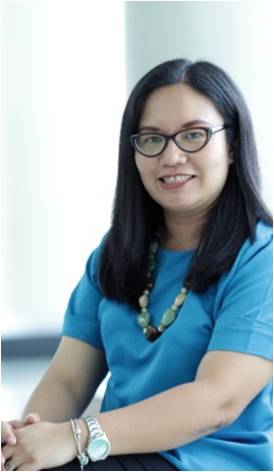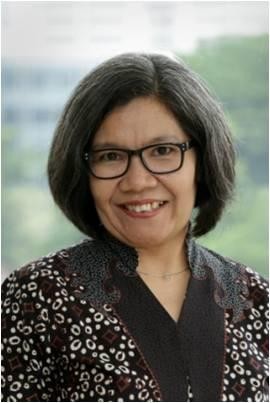Case Document
BLIBLI: THE GIANT ECOMMERCE DANCING ON THE STOCK FLOOR
PT. GARUDA INDONESIA: A LESSON ON AN ACCOUNTING SCANDAL AND AUDIT FAILURE?
This case discusses Garuda Indonesia’s 2018 financial report which is deemed to be misstated with respect to its revenue account. Despite this, the auditor issued an unqualified opinion. As a public company and national flag carrier of Indonesia, this case attracted a lot of attention from and was scrutinized by many stakeholders. A financial report should contain certain characteristics to it (usually referred to as qualitative characteristics of financial information), so that users can rely on it to help them make business decisions. Two commissioners of Garuda decided that Garuda’s 2018 report did not satisfy the accounting standards, and hence they refused to sign the report.
After receiving high publicity and conducting a thorough investigation, in June 2019, regulators finally announced that Garuda had manipulated its 2018 report and required Garuda to publish a restated financial report. In addition, Garuda was also required to pay a fine. The regulator also imposed sanctions to the auditor for failing to perform the audit process according to the auditing standards. In a sense, this case is yet another example of an accounting scandal and audit failure. Nevertheless, there is always another side of the story, which is expected to be discussed during the class discussion.
GARBAGE CLINIC INSURANCE: TRASH PAY YOUR HEALTH INSURANCE
GRUNDFOS INDONESIA: MEASURING ELECTRICITY EFFICIENCY
The case study is a case study on energy efficiency accounting that leads to energy saving and CO2 reductions with cost saving as the financial result. This case study describes how Grundfos Indonesia as a pump supplier for PT. SRM, a chemical company in Indonesia, contributes to energy saving and Co2 reduction that can lead to wider access to clean water by providing its advanced inverter pump technology to its consumer.
The case study covers the introduction on Grundfos Group and Grundfos Indonesia, followed by the understanding of pump life cycle cost to enhance students’ experience and learning in studying the case. The role of PT. SRM in the case study is as the background of the case in which Grundfos has successfully delivered its services.
The main concept of the course specific topic that is relevant to the case study is the consumers and suppliers engagement. Under the concept of stakeholder engagement, the case study describes how a seemingly marketing-oriented activity conducted by Grundfos as part of engagement agreed by PT. SRM can actually lead to energy saving, CO2 reduction and cost saving. In this case study, the stakeholder engagement is slightly different from the stakeholder engagement of consumers and suppliers described in the text book (Chapter 6). In the book, stakeholder engagement is generally described as an engagement “allowed” by the inviting organization. However, in the case study, the engagement started with the pro-active approach of Grundfos that eventually agreed to solution phase in which Grundfos becomes one of the suppliers of PT. SRM in pumping system. This difference in starting point can enrich student understanding on stakeholder engagement between suppliers and consumers. The kind of report and energy accounting done in the case study will also expose the students to actual practices of communication or accountability in the making between a supplier and a consumer.
BORNEO ORANGUTAN SURVIVAL FOUNDATION (BOSF): BUILDING TRUST IN DIVERSE STAKEHOLDERS
The case demonstrates the importance of a Value Proposition for a Non-Profit Organization in shaping the organization in order to prevent them from escalating into a crisis and improve performance. The main purpose of the case is to foster a thoughtful organizational transformation through the development of an organization value proposition.
While many cases shown the importance of a value proposition from profit organization. This case illustrates that the concept of value proposition can be used to derive a purposeful organizational change and increase performances.
PT ODG INDONESIA: MEASURING THE VALUE OF AN INTANGIBLE ASSET COMPANY IN A MANAGEMENT BUY OUT
The target asset for this research is PT.ODG Indonesia (Company), a foreign investment company that was established in 1991, owned majority by a foreign investor of O’Donnell Griffin Australia (80%) (major electrical contractor in Australia) and its Indonesian partner, PT. Anugrah Daya Pratama (20%) in its business of construction service in mechanical, electrical, and fire protection. Since it was established and operating until 2009, the company has experienced several merger and acquisition in the corporation level of the foreign shareholder, which latest control and owned by Tyco Corporation, a Top 500 fortune U.S Company.
In 2007, the company was approached by Tyco Corporation and was asked to signed on a non-disclosure agreements in a lead for selling the business through a bidding over several companies including, Glendale, which were financially ran by a private equity investor of Aurous Capital, and ODG Australia themselves in hoping to fully owned the company, and other companies as well. Over several months, Glendale has reached in becoming its top bidder and working over various transactions in determining their SPA agreements with Tyco, but was later withdrawn in buying the company. Under a new management of Tyco, the company are able to maintain good work relationship to at a point of 2009, where Tyco has decided to sell ODG once more with a new other option of a Management Buyout (MBO). Therefore, once again, Tyco held a bidding to several companies, including PT.ODG Indonesia where their relationship lead to difficulties to one another as ODG position themselves as a buyer and an employee that they also have to manage documents for other potential buyers.
CV IDEAS: GROWBOX – STRIVING FOR SALES GROWTH
Growbox is a small creative industry located in Bandung. It was established in 2012 by four young individuals who wanted to be self-employed. Their idea of a business was to produce a media where mushrooms could grow. They sold the media in an attractive package, in the form of a box that was called a growbox. By buying a growbox, customers could experience growing mushrooms on their own. They were targeting people who had fun in growing plants and people who were interested in plants that had medicinal purposes.
Bandung was considered as a city in which the government put forth an effort in developing the creative industries. Most of the creative industries in Bandung were small. Approximately 96 percent of the creative industries had fewer than 50 employees. However, the revenue was quite fantastic. In a 2008 study, 19 percent of the industry had revenue of more than US$ 500,000 a year.
Growbox has been promoted many times in newspapers, in magazines, on TV, and through online media. Growbox participated in 16 exhibitions in the year 2013 alone or a total of 19 exhibitions from late 2012 to early 2014. It has won some business awards and prizes. Despite all of these achievements, there has been no significant growth in sales for the past sixteen months, particularly for the white growbox that was introduced to the market in 2012. There seems to be promising sales for the new products introduced (pink and yellow growbox).
It was a challenge for Annisa, as the finance and marketing manager of Growbox, to solve the problem of having almost no profit after operating for sixteen months with thousands of products having already been sold.
CONNECTING ACCOUNTANTS TO SUSTAINABILITY REPORTING
PT. MARTINA BERTO : IPO VALUATION
It was September 2010, more than a year since PT Martina Berto’s owners decided to take the company to another level of its life cycle, to be a public company. Almost all necessary requirements for going public had been prepared. PT Martina Berto’s management had worked flat out to prepare all documents and appointed advisors required by Badan Pengawas Pasar Modal dan Lembaga Keuangan (Bapepam LK) to register PT Martina Berto initial public offerings (IPO). It was a massive work for the management. However, Bryan David Emil, the CEO of PT Martina Berto, thought that those hard works were worthy. He believed by taking PT Martina Berto going public was the right way for the company to achieve its vision as a leading company in beauty and spa industry in Indonesia. Getting fresh cash from IPO for funding its long term strategic plan was one thing, but imposing a good corporate governance practice in the company was the main reason for Bryan why going public was chosen. He believed that good corporate governance would ensure the company sustainability.
PT JAMSOSTEK INDONESIA : RISK MANAGEMENT
It’s been 7 years since 2004, but Law proposition (Rancangan Undang-Undang) about Badan Penyelenggara Jaminan Sosial (BPJS) had not yet been completed. This bill was a mandate from UU No. 40/2004 about Sistem Jaminan Sosial Nasional (SJSN), ratified by (former) President Megawati Soekarnoputri. If the law proposition about BPJS was completed, this would become a holding institution that administered four state-owned insurances, which consisted of health insurances, safety insurances, pension insurances and life insurances.
This settlement was collided with oppositions based on the legal entity form of BPJS, whether these four BUMN insurances: PT Jamsostek, PT Asuransi Kesehatan Indonesia, PT Asuransi Sosial Angkatan Bersenjata Republik Indonesia and PT Dana Tabungan dan Asuransi Pegawai Negeri would be merged. In one hand, the constraint in terms of legislation was the unfinished harmonization of several regulations such as UU No. 3/1992 about Jamsostek and UU No. 11/1992 about Pension Fund. Pension Fund was still voluntary and not mandatory. Some laws were still overlapping and burdensome to employers. On the other hand, not all companies provided pension insurances for employees and solely relied on Jamsostek.
On October 2010, PT Jamsostek resisted the merger of four State-Owned Enterprise (BUMN) insurances into one Badan Penyelenggara Jaminan Sosial (BPJS). Four BUMN insurances had differences from characteristics of participants, programs, and most importantly was the difference in how each company covered risk exposures such as market risk and liquidity risk.












